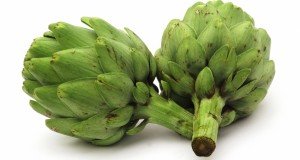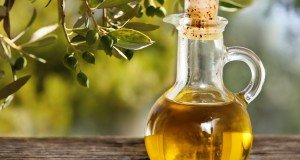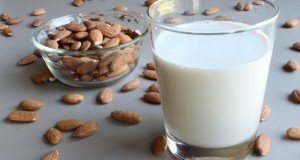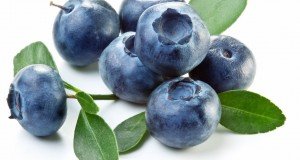What is the safest source of fish?
(NaturalHealth365) In today’s world, the subject of fish is a mixed bag. On the one hand, we are told to eat fish on a regular basis – because of its omega-3 content. On the other hand, we are warned about toxic levels of heavy metals, pesticides and antibiotics in many kinds of fish.
Here is how to get in your fish in a way that is safe and as toxin-free as possible.
Avoid farm-raised fish at all costs!
When it comes to toxin as well as nutritional levels, where fish is sourced makes all the difference. The high fat content in most fish make them great storehouses for pesticides and other contaminants. Some estimates say that toxin concentrations in sea and fresh water life can be as much as 9 times the concentrations found in the waters they swim in.
In general, farm-raised fish is just plain bad news, especially when it comes to five of the most common fish types: salmon, seabass, cod, cat fish and tilapia.
These five and others are raised commercially in close quarters in much the same way as commercial cattle, chickens and swine are raised. Fish farmers also use some of the same basic procedures: fill the fish with antibiotics to ward off the diseases that come with crowded conditions.
Of course, eventually these diseases become resistant to the antibiotics, so more and stronger ones must be used.
Sea lice on farm-raised salmon is a growing epidemic
Fish farmers use pesticides and insecticides on the fish on their farms, especially salmon, to prevent “sea lice.” Sea lice infestations are a little-known problem that has gotten larger over the last 30 years.
In fact, fishermen off the coast of Norway, Scotland and Iceland say that the common Salmon louse (Lepeophtheirus salmon) was rare 30 years ago. Nowadays, it causes salmon farms to lose thousands of fish each year.
As of 2017, salmon lice infest roughly half of Scotland’s farms.
Massive infestation is also encouraging chemical companies to come up with more dangerous pesticides. A 2014 report published in the journal Aquaculture looked at four of the top sea lice pesticide brands – AlphaMax®, Salmosan®, Interox® and Paramove™.
They found that some of these brands were lethal to lobsters 10 kilometers away. Two especially harmful ingredients were deltamethrin and azamethiphos.
Wayne Moore of Fisheries and Oceans Canada told reporters for CBC News, New Brunswick that “there are potential [lethal issues] associated with each product.”
Toxicity in fish feed is on the rise
As if all that wasn’t enough, studies are discovering more and more concentrations of other toxins in fish that eat mostly feed. The Environmental Working Group states that rates of PCB’s (polychlorinated bipheyls), a known carcinogen, may be up to 16 times higher in farm-raised salmon than wild-caught salmon.
Other cancer-causing toxins that may be in the commercial, farm-raised fish you are grilling tonight include dioxins, dibutyltin and Polybrominated Diphenyl (PDBEs). All of these chemicals are endocrine disruptors which can lead to breast cancer.
PDBEs, used in flame retardants, are especially correlated with breast cancer risk. A 2012 Chinese study published in the journal Environmental Health Perspectives found that a version of PBDE was able to “promote proliferation of various cancer cells from the female reproductive system and normal ovarian CHO cells.”
If you’re going to eat fish, make sure it’s wild caught!
In its natural, unpolluted state, fish is still one of the best sources of protein and healthy omega-3 fatty acids. If farm-raised is off the table (and, by now, I hope it is in your home!), what can you eat instead?
The best options, according to many experts, is wild-caught sockeye salmon and freshwater trout. In addition, others with the lowest amounts of toxins include albacore tuna that has been tested for mercury as well as sardines and mackerel from the Atlantic.
Remember that most Atlantic salmon is farmed these days.
When it comes to fish, the sad fact is that the list of truly safe options is getting smaller by the year. The ongoing waste being dumped into the seas and freshwater waterways as well as the side effects of major accidents such as Fukushima is causing some experts to caution against once proven-safe options such as wild-caught Pacific salmon and tuna.
I recommend companies like SafeCatch.com and VitalChoice.com – who test each batch before they go out to you.
The most prudent choice regarding fish is to find the safest, wild-caught sources possible and make it a regular, yet sparing, addition to your meal plan. Then get created and utilize the many other safe and organically-raised protein options as well as plant-based sources of omega-3s out there for your healthy, cancer-free life!
Sources for this article include:
CDC.gov
EWG.org
TheGuardian.com
ResearchGate.net
CBC.ca
EPA.gov
PETA.org
About the author: Dr. Veronique Desaulniers (“Dr. V”) is a best-selling author and specialist in Chiropractic, Bio-Energetics, Meridian Stress Analysis, Homeopathy and Digital Thermography. After 30 years in active practice, she decided to “retire” and devote her time to sharing her personal, non-toxic Breast Cancer healing journey with others. Her years of experience and research have culminated in “The 7 Essentials™ “, a step-by-step coaching program that unravels the mystery of healing the body. Her website and personal healing journey have touched the lives of thousands of women around the globe. To get your F.R.E.E. 7-day mini e-course and to receive her weekly inspiring articles on the power of natural medicine – visit: BreastCancerConqueror.com











